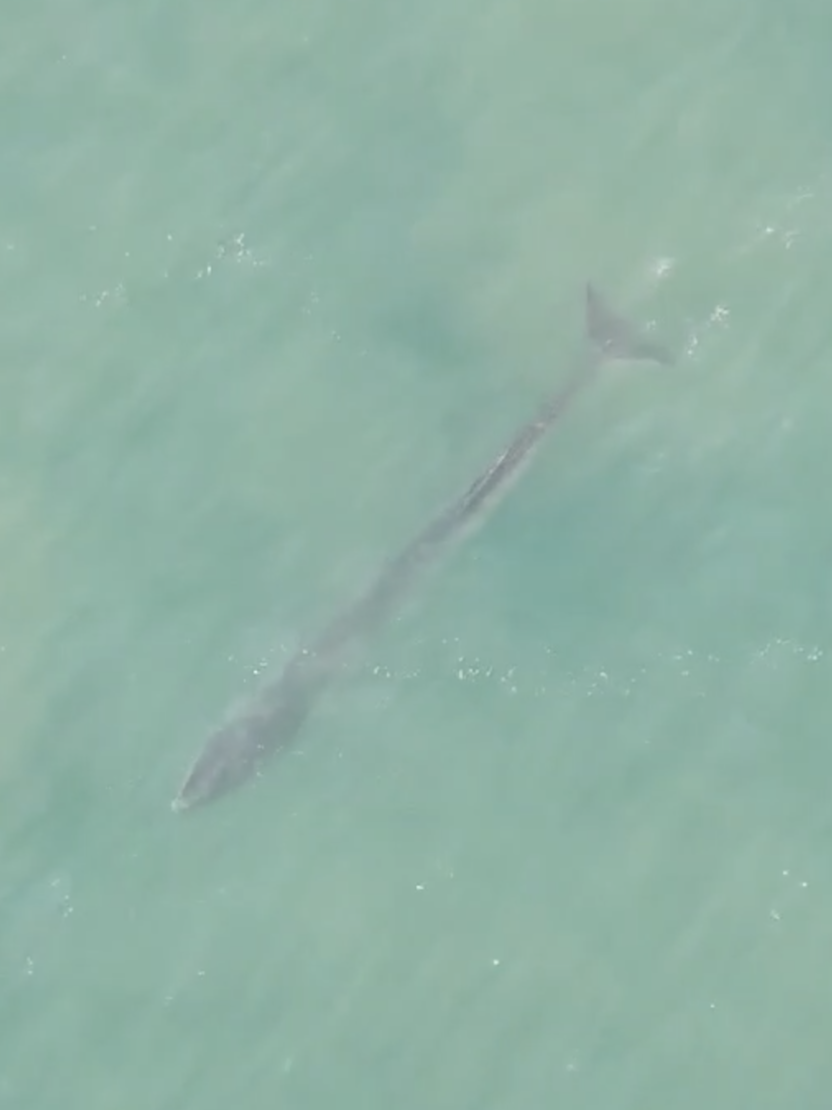First living fin whale in Belgian waters

On the 17th of February 2025, a fin whale was spotted at the C-Power wind farm in Belgian waters. This is the first confirmed sighting, backed by images, of a live individual of this species in Belgium in recent times.
It must have been quite a surprise when an employee of the C-Power wind farm noticed a large cetacean in the wind farm on Monday the 17th of February, several dozen kilometers off the Belgian coast. The animal was filmed, and the footage was sent to the Institute of Natural Sciences, which coordinates the monitoring of the effects of offshore wind farms on the marine environment. The images allowed experts to identify the animal as a fin whale (Balaenoptera physalus), appearing to be a thin individual.
How rare?
All fin whales previously seen in Belgium and confirmed to be fin whales were dead specimens. A sighting of a fin whale at the C-Power wind farm is therefore highly exceptional. This is the first documented case, with images, of a living individual in Belgian waters.
In the 20th century, three strandings of fin whales were recorded along the Belgian coast. Severely decomposed specimens washed ashore in 1939 and 1978, followed by the stranding of a recently deceased whale in November 1997 (Ostend). A piece of stranded skin in September 1994 (also in Ostend) could not be definitively identified as belonging to a fin whale.
Although six Belgian cases have been recorded in the 21st century, they all involved dead whales. Four were fin whales struck by large ships. The first was observed only at sea (June 7, 2004), while the remaining three were found when ships entered ports (September 22 2009, Antwerp; November 9 2015, Ghent; August 29 2023, Antwerp).
A carcass spotted at sea on October 24, 2018, washed ashore in De Haan on October 25 under controlled conditions. Another dead whale drifted along the Belgian coast on September 30, 2022, before washing up in the Dutch town of Westkapelle on October 2.
An ocean giant with asymmetrical coloring
Reaching up to 27 meters in length, the fin whale is the second-largest whale species and thus the second-largest animal on Earth, surpassed only by the blue whale. It has a brownish-gray back and a white underside. A distinctive feature is its asymmetrical head coloring: the lower left jaw is dark, while the lower right jaw is white or light gray. The white right lower jaw is just visible in the footage taken at the C-Power wind farm.
Like many other large whales, the fin whale is a cosmopolitan species, meaning it is found in all major oceans, from polar to tropical waters. It feeds on krill, schools of fish and squid. The shallow North Sea does not provide an ideal habitat for the species. While fin whales generally migrate to northern feeding grounds in summer and southern breeding areas in winter, their migration patterns in the Atlantic Ocean are not well understood. Some individuals even remain in higher latitudes year-round.
Increase in Belgian cases
The population of fin whales in the North Atlantic is slowly recovering from the historical decline caused by whaling. Only Japan, Norway, and Iceland still allow whaling. A growing number of fin whales in deeper Atlantic waters increases the likelihood of a stray individual ending up in the shallow North Sea.
Additionally, the rising number of ships at sea has led to an increase in incidents involving large marine mammals. A significant portion of the fin whales that have ended up in Belgian waters died due to collisions with large ships, likely outside Belgian waters.
Finally, the chance of reporting unusual marine fauna - whether dead or alive - has greatly increased in recent decades due to the higher number of people at sea and the ease with which sightings, photos, and videos can now be shared.